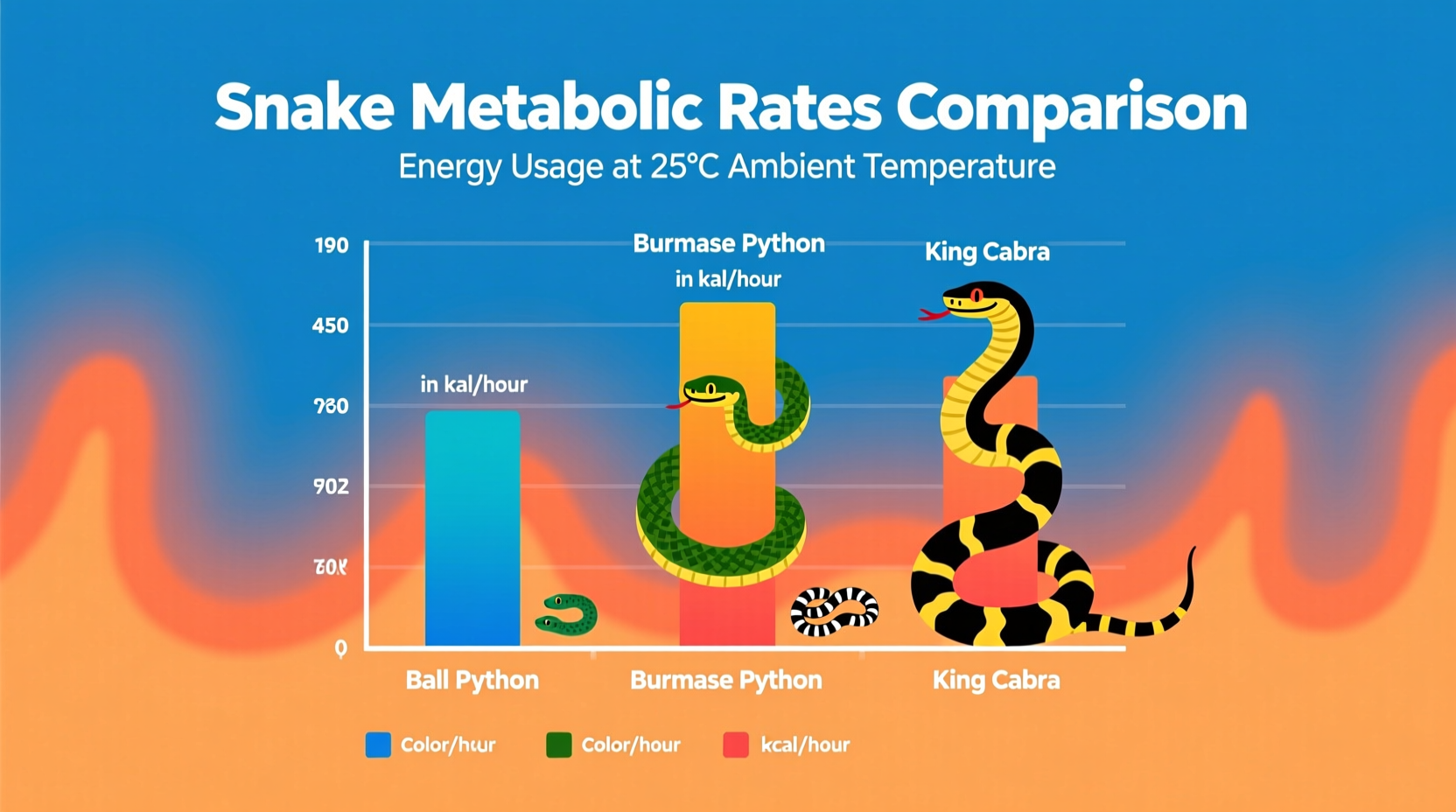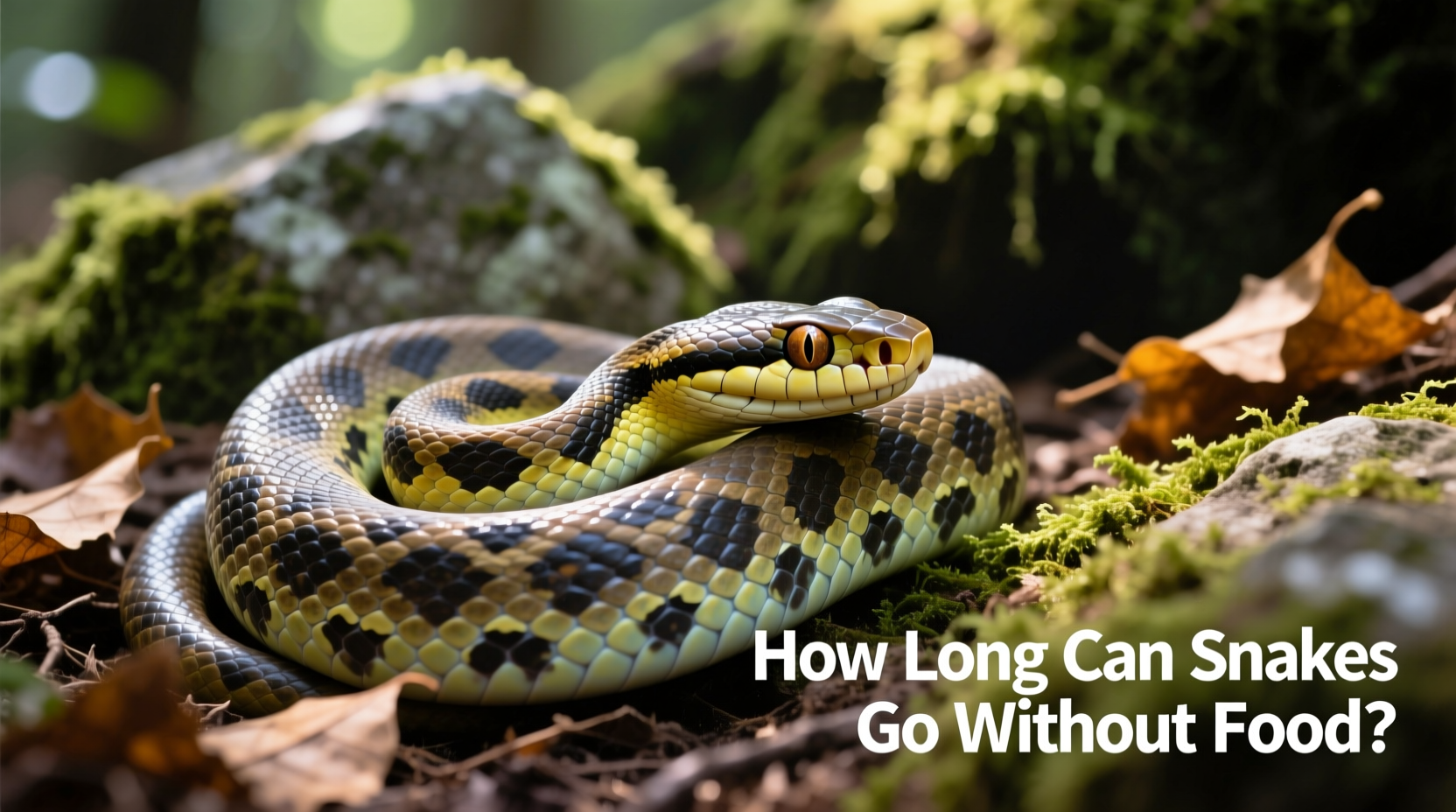Most snakes can survive 2-3 months without food, though this varies significantly by species, age, health, and environmental conditions. Larger species like pythons and boas may endure up to 6 months or more in optimal conditions, while smaller species typically manage 2-8 weeks.
Have you ever wondered how snakes survive in the wild for extended periods without eating? Whether you're a concerned snake owner or simply fascinated by reptile biology, understanding snake fasting capabilities is crucial for proper care and appreciation of these remarkable creatures. In this comprehensive guide, we'll explore the science behind snake metabolism, species-specific variations, and practical implications for snake owners.
The Science Behind Snake Metabolism
Snakes possess extraordinary metabolic adaptations that allow them to survive extended periods without food. Unlike mammals, snakes have evolved to feast occasionally rather than eat daily. When food is scarce, their metabolic rate can decrease by up to 72%, significantly reducing their energy requirements.
Research published in the Journal of Experimental Biology demonstrates that snakes can adjust their organ sizes during fasting periods, shrinking non-essential organs while maintaining critical functions. This remarkable physiological flexibility allows them to conserve energy until their next meal becomes available.
Species-Specific Fasting Capabilities
Not all snakes are created equal when it comes to fasting endurance. The following comparison highlights key differences among common species:
| Snake Species | Average Fasting Duration | Maximum Recorded | Key Influencing Factors |
|---|---|---|---|
| Burmese Python | 6-12 months | 2 years (in captivity) | Size, temperature, health status |
| Reticulated Python | 4-8 months | 18 months | Age, seasonal changes |
| Ball Python | 2-6 months | 12 months | Breeding season, stress levels |
| Corn Snake | 4-8 weeks | 3 months | Temperature, humidity |
| King Cobra | 3-6 months | 9 months | Prey availability, habitat |
Evolutionary Adaptations for Survival
Snakes' ability to survive extended fasting periods evolved over millions of years as a survival mechanism in environments where prey was unpredictable. The evolutionary timeline reveals key adaptations:
- 100 million years ago: Early snakes developed slower metabolisms compared to other reptiles
- 65 million years ago: Post-dinosaur extinction, snakes evolved specialized digestive systems for infrequent large meals
- 30 million years ago: Development of metabolic flexibility allowing organ size adjustment during fasting
- Present day: Modern snakes can survive months without food while maintaining essential bodily functions
This evolutionary journey explains why snakes can survive much longer without food than similarly sized mammals. Their bodies essentially enter a state of "suspended animation" where only critical functions continue at minimal levels.

Wild vs. Captive Snake Fasting Patterns
Understanding the difference between natural fasting behaviors in the wild versus captivity is essential for proper snake care:
In their natural habitats, snakes often experience seasonal fasting during colder months or dry seasons when prey is scarce. Many species naturally reduce feeding during breeding seasons or when establishing new territories. Wild snakes typically maintain better body condition during fasting periods because they can regulate their activity levels and environmental conditions.
For captive snakes, the context changes significantly. While they may fast for similar biological reasons, captive environments present different challenges. Temperature fluctuations, stress from enclosure conditions, or improper husbandry can make fasting more dangerous for pet snakes than their wild counterparts.
When Fasting Becomes Dangerous: Critical Warning Signs
While fasting is natural for snakes, certain conditions transform it from normal behavior to a medical emergency. The American Veterinary Medical Association identifies these critical warning signs that indicate your snake needs immediate veterinary attention:
- Weight loss exceeding 10% of body mass
- Sunken eyes or noticeable muscle wasting along the spine
- Lethargy lasting more than 72 hours after expected activity period
- Dehydration indicators like skin tenting that lasts more than 2 seconds
- Respiratory distress or unusual breathing patterns
According to reptile care guidelines from the Association of Reptilian and Amphibian Veterinarians, snakes under six months old should never go more than 4 weeks without food, as their developing bodies require consistent nutrition.
Practical Care Guidelines for Snake Owners
If your pet snake stops eating, follow these evidence-based steps before becoming concerned:
- Verify environmental conditions: Check that temperature gradients (75-85°F cool side, 88-96°F basking area) and humidity levels match species requirements
- Assess seasonal patterns: Many snakes naturally reduce feeding during breeding seasons (spring) or pre-shed periods
- Try feeding adjustments: Change prey size, type, or presentation method (live vs. frozen/thawed)
- Monitor weight weekly: Use a digital scale to track changes; 5-7% weight loss may be normal during fasting
- Consult a reptile veterinarian: If fasting exceeds species-specific norms or warning signs appear
Remember that occasional fasting is normal behavior for many snake species. The University of California's Reptile Care Program notes that ball pythons may skip meals for 2-3 months during winter without health consequences, provided they maintain proper body condition.
Factors That Significantly Impact Fasting Duration
Several critical factors determine how long a specific snake can safely go without food:
- Age: Juvenile snakes require more frequent feeding (every 5-7 days) compared to adults (every 10-14 days)
- Size: Larger snakes generally have greater fat reserves and slower metabolisms
- Health status: Underlying conditions like respiratory infections reduce fasting tolerance
- Temperature: Cooler environments slow metabolism, extending fasting capability
- Previous feeding: Snakes that recently consumed large meals can fast longer
- Season: Many species naturally reduce feeding during breeding seasons
These contextual boundaries help explain why providing a single "how long" answer is impossible without considering the specific circumstances. A healthy adult Burmese python in optimal conditions might safely fast for 6 months, while a juvenile corn snake under stress might show health deterioration after just 3 weeks.
When to Seek Professional Help
Knowing when to consult a reptile veterinarian can save your snake's life. The Association of Reptilian and Amphibian Veterinarians recommends professional consultation if:
- Your snake hasn't eaten for longer than the species-specific norm
- You notice any of the critical warning signs mentioned earlier
- Fasting coincides with other symptoms like vomiting or diarrhea
- Your snake refuses food for more than two consecutive feeding attempts
Early intervention significantly improves outcomes for snakes experiencing problematic fasting. Many issues that cause appetite loss are treatable when addressed promptly.











 浙公网安备
33010002000092号
浙公网安备
33010002000092号 浙B2-20120091-4
浙B2-20120091-4